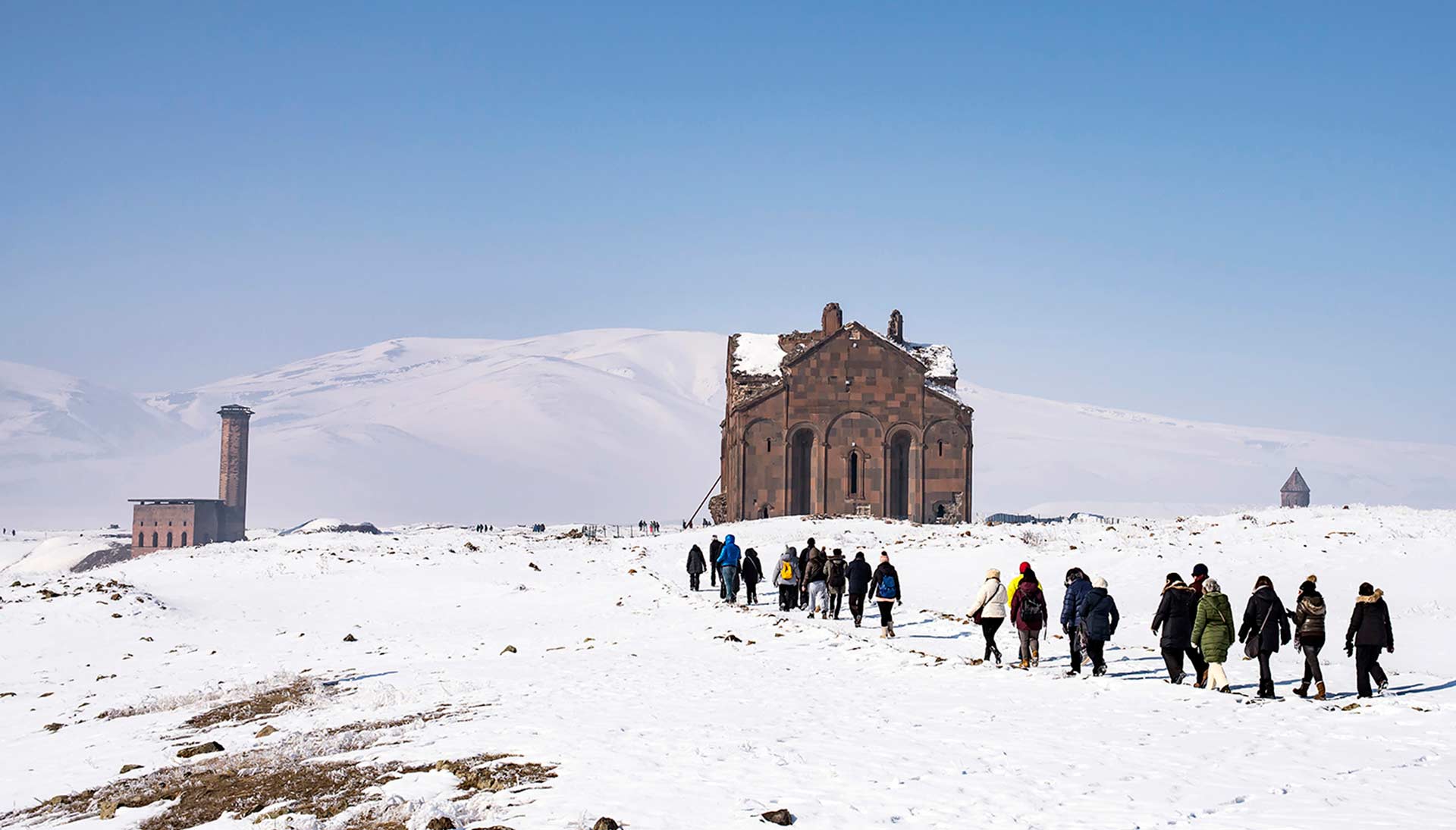Ani Ruins

Ani Ruins, which is located on the historical Silk Road has made Kars the center of attraction for cultural tourism, and the remains from the once rich and magnificent city Ani, were included in the UNESCO World Cultural Heritage List in 1996.
The Ancient City of Ani, where Armenian, Georgian, Seljuk and Byzantine cultures meet at the gate of Anatolia from the Caucasus to Central Asia, is visited by thousands of tourists from all over the world every year. Ani Ruins which is located on Turkey’s border with Armenia once held economic and political power due to its geographical and strategic location.
History of Ani Ruins
City of Ani, which is also known as the Ani Ruins, at the border of Turkey and Armenia is believed to have history dating back to the Urartu before Christ. We can say that its name first appeared in history around the 9th century as an established city. It was used as the capital during the Bagratuni Armenian Dynasty between 961-1045. It is said that it lived its most brilliant period under the reign of the Armenian king Gagik between 989-1020.
Ani which was captured by Byzantium was conquered by the Seljuks in 1064, but soon changed hands again. Ani, where the Kurdish principality of Şeddadi ruled for many years, was once again under the protection of different Christian principalities in 1190 under the protection of the Georgian esquire named Zakare. After being plundered by Timur, the ancient city, which was once again included in the Turkish lands by the Ottoman Empire, remains within our borders with the Republic.
Cradle of Civilizations, Ani Ruins
The ancient city Ani, which has titles such as a city of forty gates, a world city; has been the capital of the kingdoms of Cordoba, Bagrat, Byzantion for centuries and is a mutlicultrual and multi-faith metropol city. Ani Ruins which is thought to have a population of 100 thousand and of being the richest settlement of medieval times had a large market located in the middle of the city which is believed to be the center of business of that region.
Ani Ruins has won the admiration of the world with its original architecture of magnificent city gates, impressive churches, cathedrals, palaces and caravanserais which reflect the architecture of Byzantine, Armenian and Anatolian Seljuk all together. On the cut stone walls of the caravanserais, the meticulousness of the Armenian architecs and the doors bearing the embroidery of stone and wood carving unique to the Anatolian Seljuk architecture were used together.
The ancient city of Ani, the cradle of civilizations, which is estimated to have a history dating back to three thousand BC, has been the transition and accommodation point of dozens of civilizations that migrated from Caucasus to Anatolia and back from Anatolia to the Caucasus for ages before settled societies were established. It witnessed conquests, wars, invasions, looting, and times of peace and prosperity. The lands of Ani, where more than twenty civilizations have established their lives, spread over an area of approximately 80 hectares. We can say that the walls surrounding the city built on the rocks are 8 meters high and approximately 4.5 kilometers long.
Faith Center
No wonder that the first Turkish mosque built in Anatolia is also in these lands! Ani, the land of kings, was an important center not only of trade but also of faith. Nearly forty churches and chapels have been identified in the studies carried out so far in the Ancient City of Ani, known as the City of thousand Churches.
Anatolia’s First Turkish Mosque: Ebul Manucehr
One of the important symbols of Ani being a cosmopolitan metropolis is the Ebul Manucehr Mosque, one of the first examples of Seljuk architecture. Even today, it fascinates those who see its tuff stone structure and star design workmanship. The mosque, which was built by Ebu’l Menucehr esquire in 1072 after the conquest of the city by the Anatolian Seljuks, is the first mosque built by the Turks in Anatolia.
The mosque, which was built on the side of the city of Ani, which is full of cathedrals, chapels and churches, overlooking the Arpaçay valley, has been destroyed to some degree however its 99-step minaret and its structure built on a two-storey rectangular foundation has survived to this day.
What’s in the Ani Archaeological Site
Although the portable artifacts found during the excavations carried out by the Russian professor Marr during the Ottoman-Russian war were brought to Russia during this period, the city of Ani continues to await its visitors with its immovable artifacts.
The Middle Gate (Lion Gate), Double Body Gate (Kars Gate), Hıdırellez Gate, Acemoğlu Gate, Mığmığ Gate, Divin Gate and Water Gate, and the works you will see while visiting the ancient city of Ani with seven gates can be listed as follows:
- Great Cathedral
- Saint Prkich (Keçeli) Church
- Lion Gate
- Gagik Church
- Rock Church
- Abughamrents Church
- Illustrated Church
- Nuns Monastery
- Young Girls Church
- Seljuk Palace
- Ebul Manucehr Mosque
- Seljuk Caravanserai
- Ebul Muammeran Mosque
- Small-Big Bath
- Bostanlar Creek Caves
- Silk Road Bridge
- Citadel
- Temple of Fire
